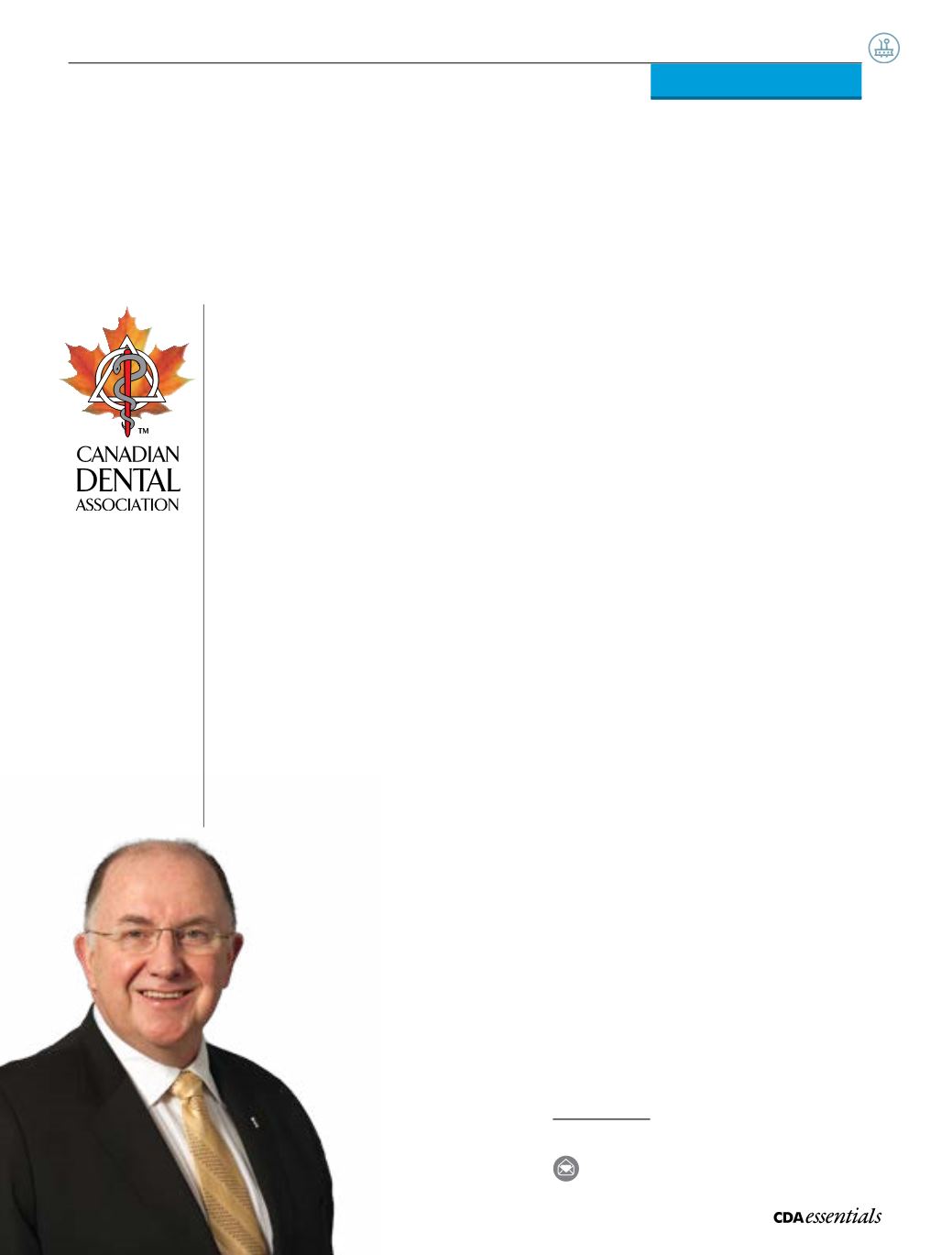

9
Volume 1 Issue 7
|
CDA
at
W
ork
The Affordability Gap
T
he recent report by the Canadian
Academy of Health Sciences,
Improving access to oral health
care for vulnerable people living in
Canada
, reveals that Canada ranks
near the bottom among Organisation for
Economic Co-operation and Development
(OECD) nations in terms of public funding of
oral health care. Canada’s changing population
demographics also mean that fewer Canadians
have employment-based dental benefits. The
result—a widening gap between those who
can pay for dental care and those who can’t—
is something that should concern us all.
According to the Canadian Health Measures
Survey, 2007–09, about 75% of people living in
Canada visit the dentist annually, but 17% of our
population reported avoiding the dentist due
to cost—that’s roughly 6 million people. Not
surprisingly, more people living in the lowest-
income families reported cost as a problem,
but the range of people who struggle to afford
dental care is broadening.
Canadian statistics show that the number of self-
employed, temporary and part-time workers—
people with jobs that typically lack employment-
based dental benefits—is on the rise. Another
segment of Canadians with limited dental
benefits is seniors, a demographic with low
rates of insurance and high levels of dental
disease. For people without employment
based-dental benefits, the issue of
affordability can often determine their
choice to either seek or avoid dental care.
Many of those with dental insurance don’t
necessarily find it financially easier because
dental benefits have become less
generous (e.g., limited annual
maximums or services, expanded
deductibles and co-payments) or are more
flexible (e.g., plans that don’t earmark specific
amounts for dental services). In my own practice
in Newfoundland, a province with one of the
lowest employment rates in the country and
its fair share of temporary employment, I’ve
presented treatment plans to my patients only to
have them decide against it once they discover
their benefit plan has a sizeable deductible. For
some of these patients, I’ve seen how ignoring a
relatively small dental problem can escalate into
much costlier treatment.
Cost is just one of many factors preventing
people from seeking care. Nevertheless, some
groups are questioning if the funding and
delivery of oral health care in Canada can be
improved—and if so, how? The CAHS report lays
out a number of recommendations for achieving
a vision of “equity in access to oral health care
for all people living in Canada,” and notes it
“cannot simply depend on the good actions
of dental professionals.” Rather, the answers
will come through engagement with all levels
of government, other health care professions,
organizations representing vulnerable groups
in Canada, and health insurance companies.
CDA is committed to be an important player
in the conversation and is working to address
some of the core problems mentioned in the
CAHS report, such as identifying targeted dental
programs for vulnerable groups—which aligns
with one of the report’s key recommendations.
CDA will facilitate these discussions through the
Canadian Oral Health Roundtable (formerly the
National Oral Health Action Plan Symposium)
planned for February 26, 2015. It’s a major
challenge to make dental care accessible for
those who stuggle to afford care. Yet like an
aching tooth, it’s an issue that can’t be ignored.
GaryMacDonald, dds
president@cda-adc.caAccess to care:
From the President


















